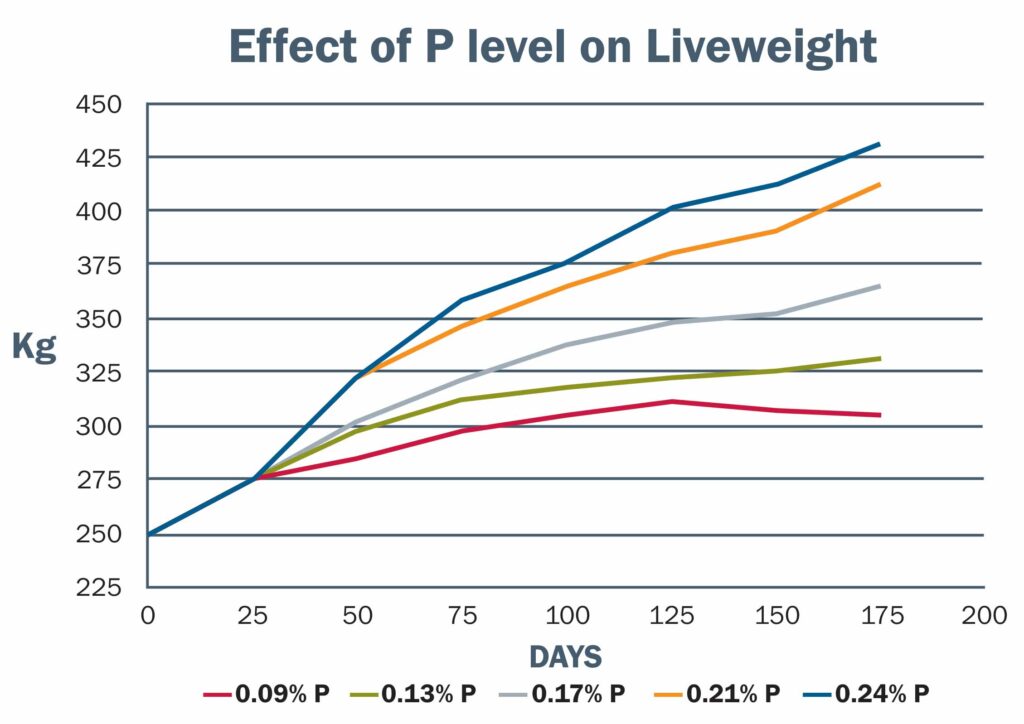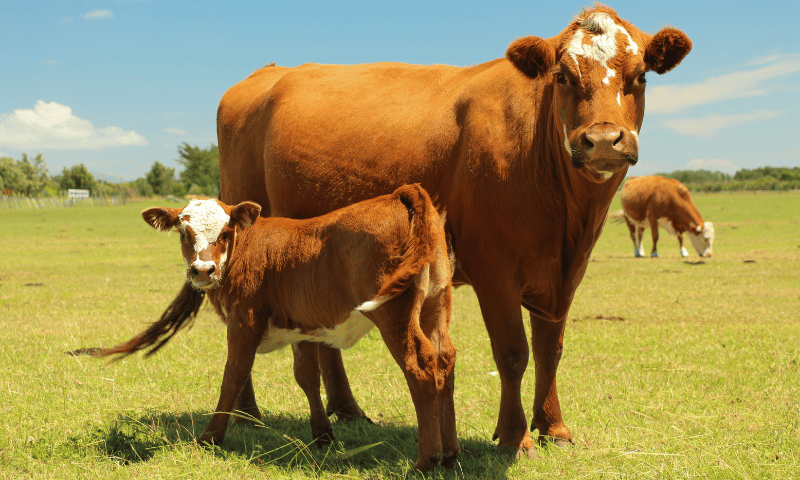Phosphorus (P) is such a powerful mineral and much research has been done on it’s benefits for livestock. The key function of phosphorus that helps to increase profitability in P deficient areas is its role in stimulating appetite and dry matter (DM) intake. This function is the reason that phosphorus is linked to growth, bone formation, feed utilisation, milk production, coat colour, fertility and immune response.
Recent MLA trials showed that adequate phosphorus levels resulted in steers gaining 125kg more than steers with a Phosphorus deficient diet. (Refer to graph below, Source: MLA funded University of Queensland Trial 2012, Update of Phosphorus project NBP537; pen study conducted by D Poppi & S Quigley, 13 March 2012, University of Qld) This gain of 125kg occurred over a 5 month period. In today’s market that’s an increase of $440 per head.

Many Australian soils are low in phosphorus (P). When soils are naturally deficient, the pastures growing on them are similarly lacking in P. Phosphorus deficiency can cause high economic losses by reducing the ability of cattle to withstand drought, reducing fertility and stunting the development of young stock. In severe cases, bone chewing, rickets, fractures and lameness may be observed. Phosphorus deficiency is also related to deaths from secondary conditions such as Botulism and Osteomalacia. Ultimately, a deficiency in phosphorus will likely result in a significant reduction in productivity and ultimately income.
When phosphorus is deficient in the diet animals will utilise mineral stores from their bones which can become frail, porous and brittle. When bone reserves are exhausted, bodily functions that are reliant on phosphorus including reproduction, growth and lactation tend to fail. Growing and lactating animals are the first and worst affected.
Animals require phosphorus all year and if supplementation is required to fix a deficiency, it works best when energy and protein needs are being met. The best time to supplement with P is when pasture quality and quantity is high, often in Spring and early Summer. A simple line to remember is Green Feed = P!
High growth rates result in an increased amount of phosphorus required to support escalating productivity. Cattle or sheep growing on good pasture during a green season will need more than twice the phosphorus as they do when maintaining weight during dry times.
For example a 400kg steer needs 7g of phosphorus per day to maintain weight but would need 22g of phosphorus per day if gaining 1.2kg/day. Therefore, the required concentration of phosphorus in the diet would need to increase from 0.9g to 1.5g P/kg DM. (MLA, 2012)
A soil test will reveal phosphorus levels and if they are below 10-15ppm (Colwell P), this indicates that an immediate response can be achieved with phosphorus supplementation. Another way to manage P deficient country is by restoring the balance of minerals to the soil.
Fertilising helps improve plant growth and consequently improves the diet of the animals grazing these pastures. Soil remineralisation is essential to restore minerals and trace elements. However, in highly phosphorus deficient areas, the most economical method is to directly supplement livestock.
MegaMin Extra Phos 8 provides natural broad spectrum macro and trace minerals, plus elevated levels of highly available phosphorus and calcium to assist overall herd health and productivity. Phosphorus is essential for energy metabolism, appetite, efficiency of feed utilisation, bone growth, lactation and fertility. Suitable for year-round use, MegaMin Extra Phos 8 is particularly beneficial for stock grazing phosphorus-deficient country.
For the latest MLA-funded phosphorus research projects for northern Australia read more>
By Shannon Godwin (BAppSc GDTL)
